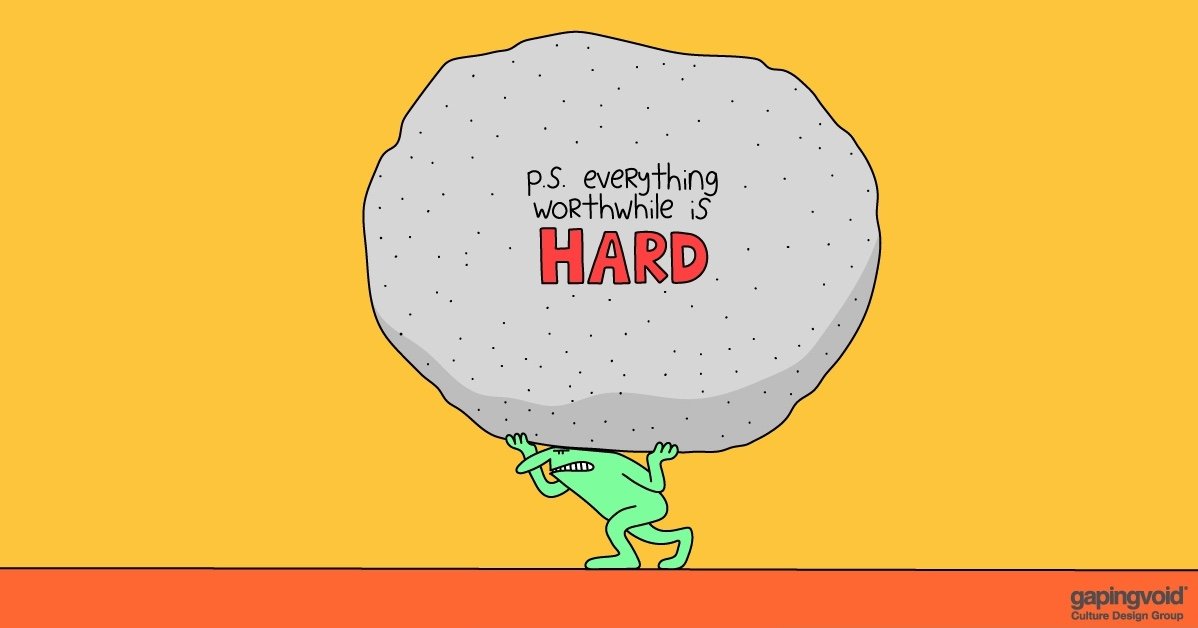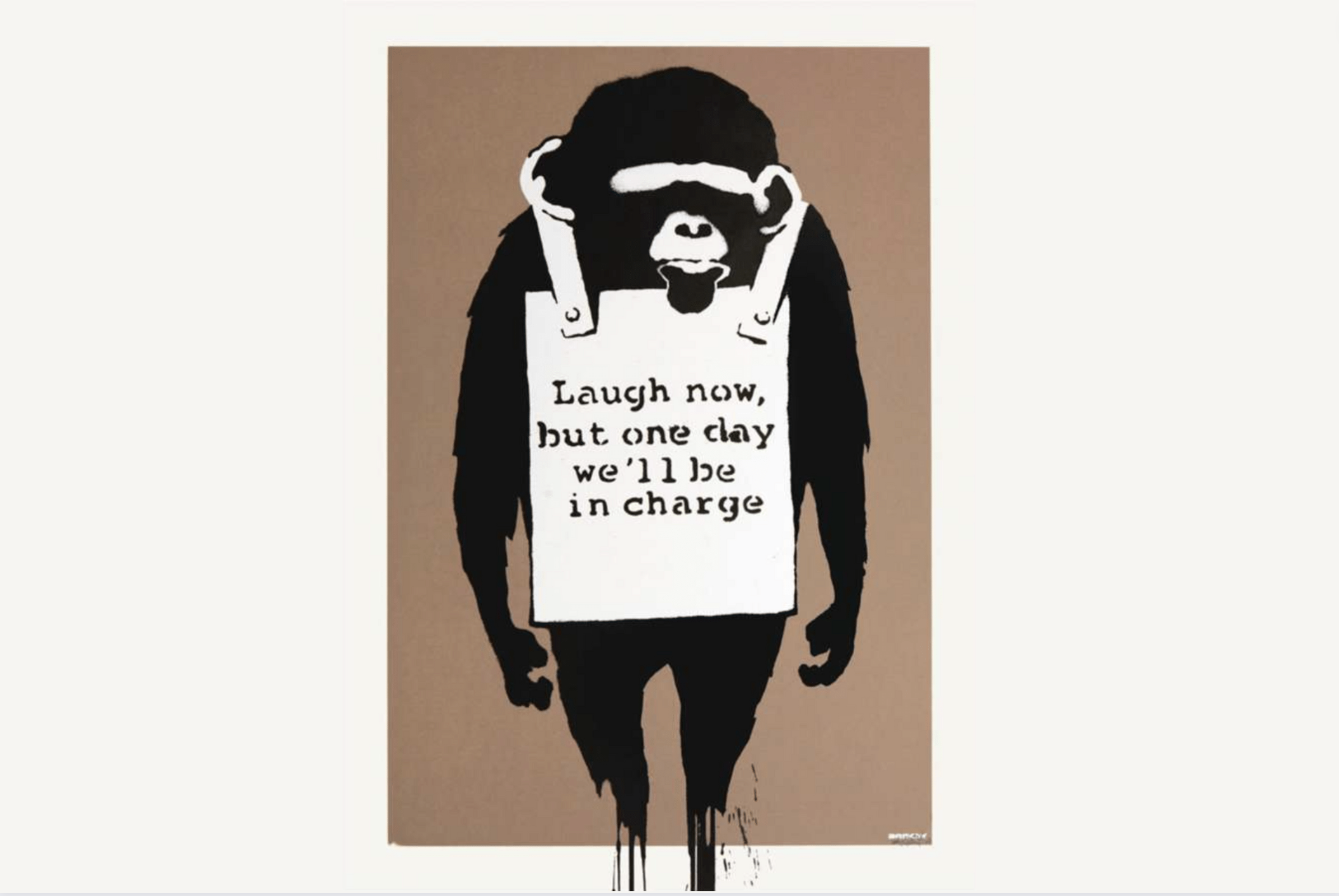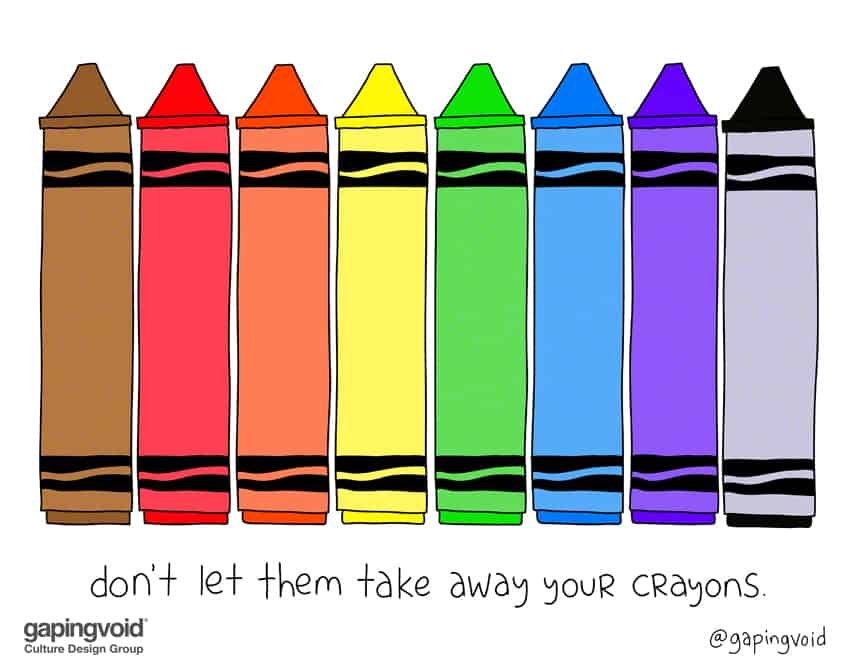Checklist Culture Change
Companies are like gardens, full of flowers and weeds--weeds are the business problems that inhibit growth. Some weeds are easy to pull. But culture problems have deep roots, like the nastiest weed, and there’s no easy way to get rid of them.
For example, a visualization tool doesn't make your staff curious. Automating a flawed process doesn't make it better. Companies with an arrogant, selfish CEOs don’t spontaneously become humble. But the work is worth it: if you get your culture right, peak performance is easier to reach.
Einstein Insanity and weeds with deep roots
Albert Einstein's witticism, "Insanity is doing the same thing over and over and expecting different results," applies in spades in the high-tech world. For 35 years, I built products that sold about $1 billion a year. Many of those buyers hoped our tools would cure their pain. Often, they did. Sometimes, the "weeds" were cultural, and tools can't fix a broken culture.
A new survey shines a light on how many weeds there are. In the 2023 NewVantage Big Data survey, 80% of leaders blame culture as the greatest obstacle to realizing business value with data, but just 1.6% treat it as their top priority.
Is there a way to cure this Einstein-ian Insanity? Why are these weeds so hard to pull? A Mckinsey study found that 70 percent of change management programs fail to achieve their goals due to employee resistance and lack of management support.
That doesn't mean that culture change isn't the answer; it just means change is hard. And, as Gapingvoid reminds us, everything worthwhile is hard:
The medical community discovered a cure for cultural Einstein Insanity
We live in the medical renaissance era. Since 1970, over 70,000 medical procedures, 6,000 diagnoses, and 4,000 drugs have been discovered. As a result, we know more about how the human body works now than ever. That's the good news.
The bad news is it's too much information to handle. Studies show that each year, about half of the 150,000 post-surgical deaths are avoidable. Thankfully, the medical community discovered how to pull the cultural weeds that lead to poor outcomes.
Twenty years ago, Harvard medical student Atul Gawande was an intern at Brigham and Women's Hospital in Boston, one of the best hospitals in the world. He learned that the best medical outcomes didn't happen at hospitals with the best technology or students. Instead, they happened at hospitals with the best process.
Gawande shared the secret to safe surgery success in his best-selling book, Checklist Manifesto: yup, you guessed it: checklists.
If you're like me, you're thinking, "Checklists? The secret to safe surgery is a checklist on a piece of paper? That's ridiculous." Read on--as Gawande says, if the clever use of checklists were a tech startup, it would be worth billions.
An old idea applied in modern times
The medical profession had taken inspiration from the preflight checklists in aviation. Sparked by crashes beginning in 1935, checklists are now an institutional practice in aviation. Here’s the preflight checklist for a Cessna 172. A good list is deceptively simple, and, most importantly, they work — they make flying safer.
Gawande led a team that designed a "safe surgery" checklist to systematize pre-surgery procedures. Some items were as simple as "wash your hands."
It worked. In one study, checklists reduced surgical patients' complication rate by 36 percent and deaths by 47 percent. And results replicated over and over.
Although checklists are becoming accepted in the medical community, it's been a slog: doctors often resist checklists as overly simplistic; hospital staffs are overworked; strong leaders and needed who have passion, humility, and a willingness to fail, and those leaders don't grow on trees.
But safe surgery checklists are spreading and working.
The art of checklist culture change
Checklist culture change takes more than making a list and checking it twice. It’s about how you create, collaborate, and systematize a process with purpose and care.
Based on insight from the Checklist Manifesto, here's how how to practice the art of checklist culture change.
Design checklists to be read out loud. Imagine you're an airplane pilot on a radio, running through your list with air traffic control. A good checklist must be that simple. Consider the “Engine Failure Checklist” for pilots below. It has just six steps, including “Turn Fuel Shutoff valve ON” and “Turn Auxiliary Fuel Pump ON.” It’s simple, direct, and easy to read out loud.
Make sure your list covers essential failures and mistakes. My favorite step on the Engine Failure Checklist is the first: FLY THE AIRPLANE!
The pilots who designed this list know that when an engine fails, it's easy for pilots to panic and forget their first job: keep flying! "Fly the airplane" illustrates the critical goal of the checklist: avoid fundamental mistakes.
Develop checklists as a team. In Gawande's "Checklist for Checklists," team review is the essence of both the "development" and "validation" phases. Each of these phases should take include peer and team reviews. Collaboration and participation creates a spirit of ownership and buy-in.
Include team communication breaks on the list: Sports teams have time outs and halftime. Sales teams debrief after key meetings are essential. Surgeons hold “Morbidity and Mortality Conferences” every week. For projects that require teamwork, like surgery or building software, put explicit communication breaks on the list.
Lists must fit on one page, have no color, and less than 10 steps, and the date. This step might be the hardest one:
Use checklists to teach and re-enforce new behaviors. Rick Tacelli, one of the best salespeople I know, used this checklist before meetings:
It's a simple list, but do you always put yourself in someone else's shoes before each meeting? Do you always debrief and discuss what you could have done better? Do you always review action items?
Rick’s recipe emphasizes empathy, connection, and putting others first. Many novice salespeople, and even some experienced ones, miss these steps. A simple list like this makes better salespeople.
Name your list. Give lists a name like Gawande's "Safe Surgery Checklist." Naming lists help socialize and spread their use.
Enlist list captains. When installing checklists in new hospitals, Gawande appoints Checklist Captains to help define, refine, and apply the list. First, the captain polls team members to edit and refine the list and make it their own. Then, they hold daily, weekly, or monthly meetings to discuss, improve, and adjust lists.
Everyone's busy. Schedules, deadlines, and distractions abound. Checklists, while simple, can be forgotten without a strong Checklist Captain to execute them.
Test, learn, and adjust lists. One list does not fit all. Gawande recommends putting lists into action, observing their success and weakness, and changing the list continuously. Eliminate confusing or redundant steps. Some problems are easy to fix, and others are impossible. Cultural change goes beyond a list, but it’s a great place to start
There's more to culture change than the humble list. Literacy programs, education, coaching, mentoring, and even great culture consulting groups like the wonderful Gapingvoid culture group, who generously allow me to use their fun and colorful art to brighten my story.
But a humble list can be that catalyst for change. Try adding “use checklists” to your list of resolutions in 2023.
References and Further Reading
2023 Data and Analytics Leadership Annual Executive Survey by NewVantage partners.
Here’s a good video explainer about the Checklist Manifesto.
Grab The Checklist Manifesto book on Amazon.
Creative culture work by Gapingvoid.




















